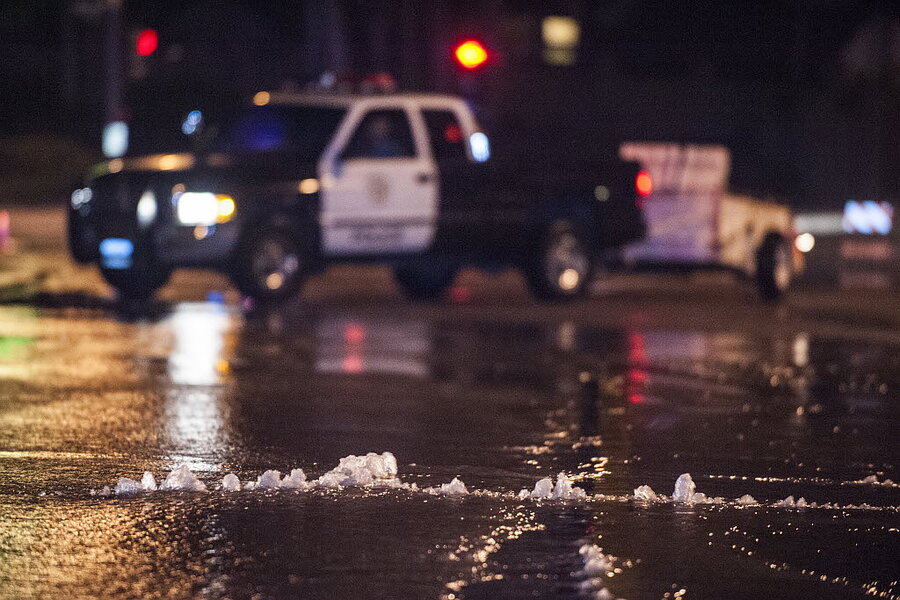California quake: why L.A. faces something worse than the 'Big One'
Loading...
| Los Angeles
It’s not so much the magnitude-5.1 earthquake – centered in nearby La Habra with well over 150 aftershocks over five days – that has residents here most rattled.
Rather, what seems to be throwing residents and business owners more off balance than the shaking is this: Seismologists are saying that the little-known geological fault responsible for the quake could do more damage than the much feared – and celebrated – “Big One” that one day will be generated by the more famous San Andreas.
This other fault, called the “Puente Hills thrust fault,” could do more damage than the “Big One” even with a lower-magnitude quake, the seismologists say, because it is located under the skyscrapers of downtown Los Angeles and a population of 4 million people. The fault, discovered in 1999, runs from the suburbs of northern Orange County through the San Gabriel Valley under downtown and ends in Hollywood.
The fault line runs under thousands of older buildings, many made with concrete and never properly retrofitted. What’s worse, the softer soil in the Los Angeles Basin would enhance a quake’s ripple effect like a stone in water. As a result, a magnitude-7.5 earthquake on this fault could kill 3,000 to 18,000 people and cause as much as $250 billion in damage, says the US Geological Survey (USGS).
By comparison, estimates are that an even larger magnitude 8 quake along the San Andreas, further north and west in more rural areas, would cause 1,800 deaths.
In 1987 a 5.9 quake on the Puente Hills fault named the Whittier Narrows killed 8 people and caused more than $350 million in damage to homes, cars, roads, and utility lines.
USGS seismologist Lucy Jones was quoted in the Los Angeles Times as saying that Friday night’s initial 5.1 quake was caused by the fault slipping for half a second underground, resulting in about 10 seconds of shaking at the surface. But because of its horizontal orientation – unlike the vertical cracks that characterize other faults – a 7.5 quake on the Puente Hills fault could cause it to slip for 20 seconds, producing shaking at the surface that would last far longer and be spread over a larger area, possibly 375 square miles.
Officials say the recent seismic activity is a necessary wake-up call for residents and businesses to pay more attention to safety contingency plans and to retrofit their properties. Because of the long intervals between earthquakes, people tend to forget the state is crisscrossed by several fault lines, they say. Friday’s 5.1 temblor was the strongest in California since the 1994 Northridge 6.7 magnitude quake, which killed 57 people and caused $25 billion in damage.
The warnings in the wake of this last quake could not be clearer.
“When an earthquake happens on this fault, it’s just about the worst one we can imagine,” Ms. Jones told ABC News. “It’s long enough to generate an earthquake greater than magnitude 7 – and even as big as 7.5 – and is located under the oldest parts of our city. We have hundreds of thousands of very bad buildings that will be exposed to very strong shaking, so we put this all together and it’s just about the worst earthquake we can think of as happening.”
While that sounds especially dire, she says scientists calculate that the Puente Hills fault has a major quake only about once in 2,500 years, compared with the San Andreas, whose quakes are more frequent, including two in the last century: 1906 in San Francisco and 1989 in Loma Prieta.





